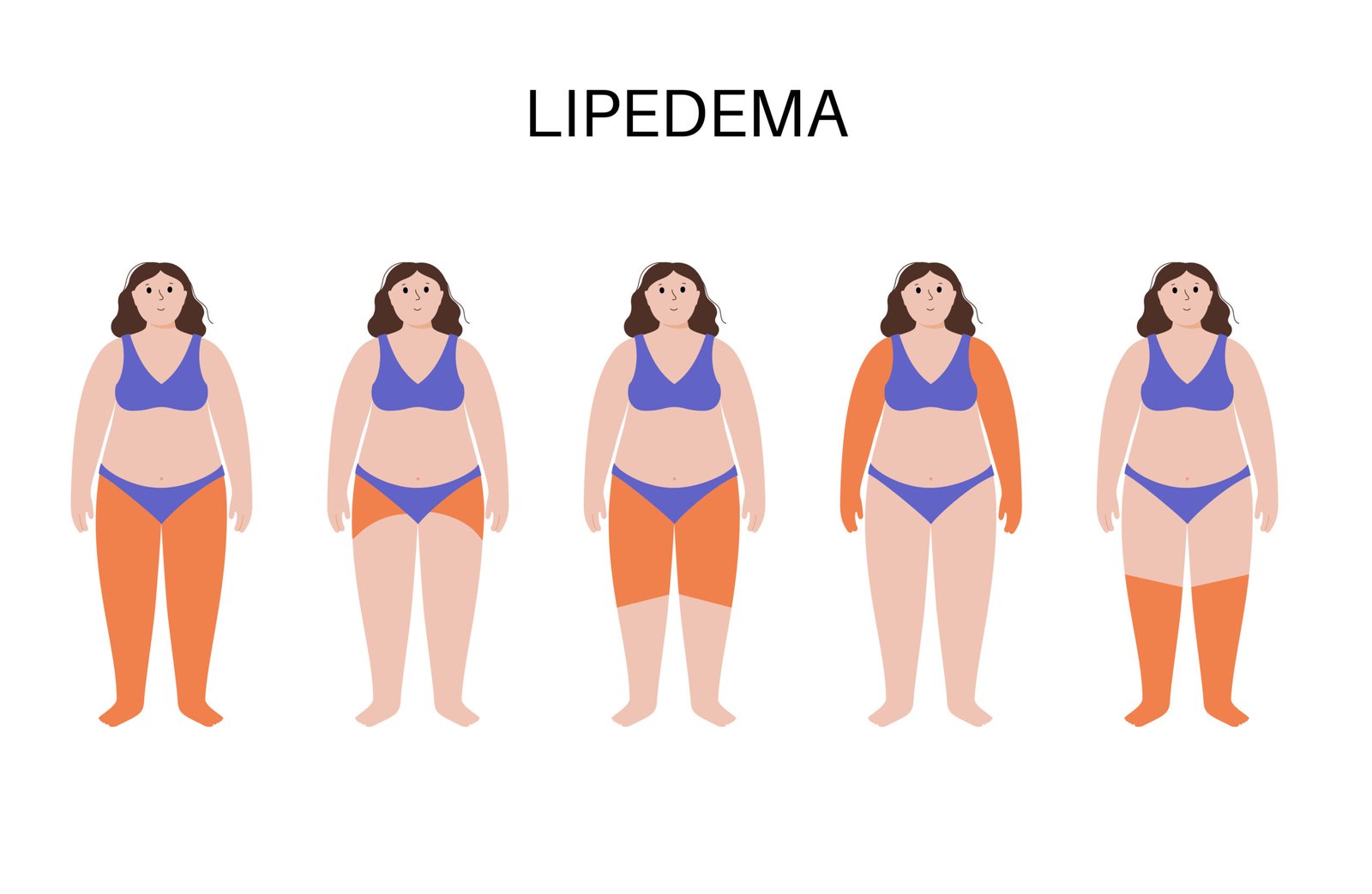
Lipedema in different stages of life
Dr. Srinagesh Vadrevu
July 2, 2024

Lipedema In Different Stages Of Life: Lipedema is a chronic condition characterized by the abnormal accumulation of fat in the lower part of the body, primarily affecting the legs and sometimes the arms. This condition can significantly impact quality of life, and its progression can vary across different stages of life. Here’s an overview of how lipedema can manifest and progress:
Lipedema In Different Stages Of Life
Childhood and Adolescence
Early Signs: Lipedema often begins around puberty, although it can start earlier in some cases. Girls may notice an abnormal increase in fat deposits around the hips, thighs, and legs.
Symptoms: Legs may appear disproportionately larger compared to the rest of the body. There might be pain, tenderness, and easy bruising in the affected areas.
Psychological Impact: The physical changes can lead to emotional distress, low self-esteem, and body image issues, especially during a period when peer acceptance is crucial.
Young Adulthood
Progression: During young adulthood, the condition may become more pronounced. The fat deposits in the lower body become more evident, and the legs might take on a column-like appearance.
Physical Symptoms: Increased heaviness and swelling in the legs. Pain and tenderness may worsen, and mobility can be affected.
Lifestyle Adjustments: Many individuals may need to adapt their clothing choices and engage in regular exercise to manage symptoms. However, traditional weight loss methods often do not impact lipedema fat.
- Lipedema in different stages of life
- Childhood
- Young adulthood
- Mid age
- Older adulthood
- Considerations for other stages of life
Lipedema In Different Stages Of Life
Middle Age
Further Progression: In middle age, lipedema can continue to progress, with fat deposits becoming more significant and potentially spreading to the upper arms.
Health Complications: The risk of secondary lymphedema increases, leading to additional swelling and complications.
Management: Compression garments, manual lymphatic drainage (MLD), and other conservative treatments become crucial. Some individuals may consider surgical options, such as liposuction, to manage symptoms.
Older Adulthood
Advanced Stages: In the later stages of life, lipedema can significantly impair mobility and quality of life. The condition may progress to its most severe form, characterized by extreme enlargement of the lower body and severe pain.
Complications: Older adults with lipedema often face more significant challenges, including joint problems, reduced physical activity, and an increased risk of developing other chronic conditions.
Comprehensive Care: Management at this stage requires a holistic approach, involving pain management, physical therapy, nutritional support, volume reduction and psychological counseling.
General Considerations Across All Life Stages
Diagnosis: Early diagnosis is crucial but often challenging due to a lack of awareness and misdiagnosis as simple obesity. Proper identification can help in managing the condition effectively.
Lifestyle and Support: A supportive network of healthcare providers, family, and friends is essential for managing the physical and emotional aspects of lipedema.
Research and Advocacy: Ongoing research and increased awareness can improve understanding and treatment options for those affected by lipedema at all stages of life.
Conclusion
Overall, while lipedema is a chronic condition that can significantly affect an individual’s quality of life, proper management and support can help mitigate its impact and improve well-being across different stages of life.
To connect with us click on the button below
To know more fill in the details below:
Recent Posts
Have Any Question?
Lipedema is a condition that causes excess fat to accumulate in the lower part of the body.
- +919515106591
- srinageshlipedema@gmail.com



